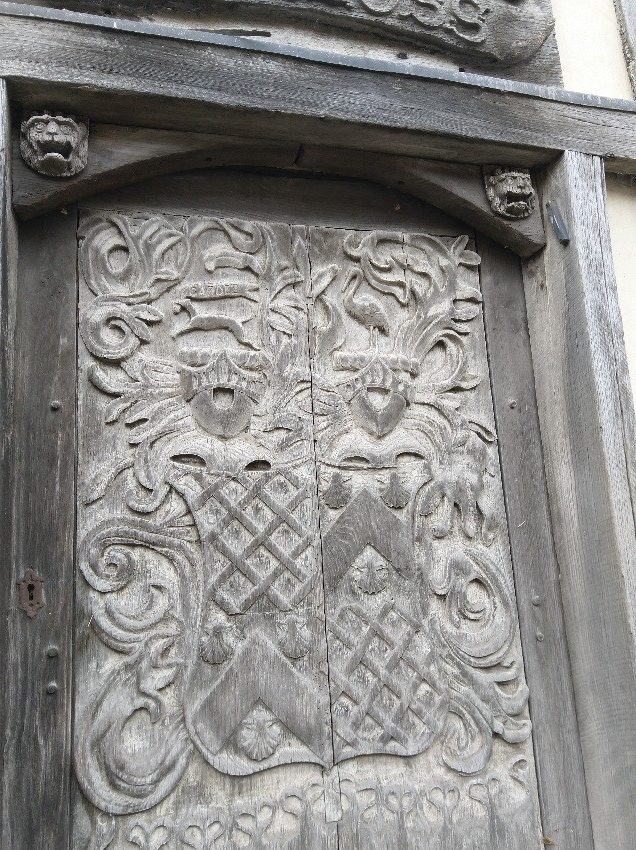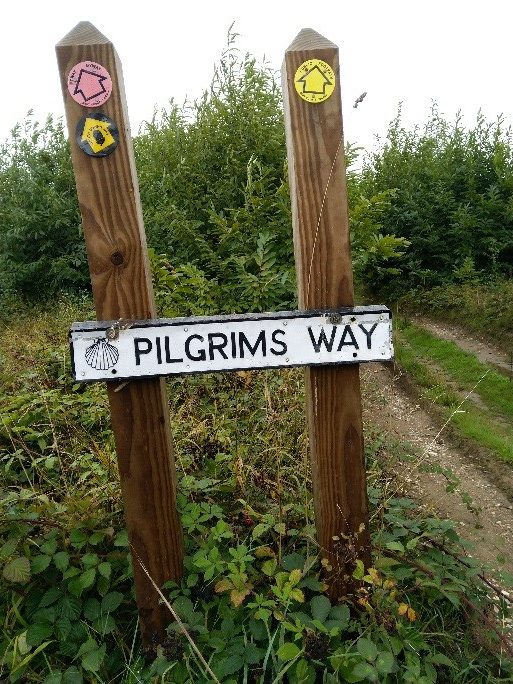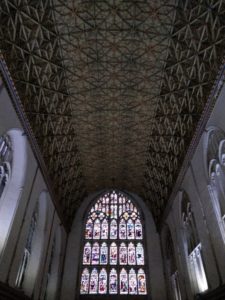Third-year history student Jack Gunn shares with us the final installment of his pilgrimage journey from Winchester to Canterbury.

On the 27th, I passed through Otford. Mentioned in the Domesday Book, it was the most British village I’ve ever encountered. A duck pond served as the roundabout around which cottages from every era back to the Tudors sat, unchanged by centuries of turbulence. I couldn’t resist having a mooch in the junky antique shop nor a homemade scone from the tea rooms. Interestingly, the remains of a bishops’ palace where Henry VIII is known to have stayed exists just a stone’s throw from the duck pond. The direction out of the village necessarily took me up to Otford Mount, a hill accessible by the steepest of stairs. A few people passed me on my ascent, giving quizzical looks. But then I remembered my outfit: boots, walking trousers, a burgundy hoodie tied round a t-shirt depicting a lonely British redcoat surrounded by angry-looking Zulu warriors and a Union Flag neckerchief wrapped round my head; an O.S. map in one hand and a walking stick in the other, I must have looked positively hermit-like with my mass of Vikingesque beard. No wonder I was stared at for what touched into the imprudent!
The penultimate day took me along a footpath through a sewage plant, but my grimacing-at-the-stench expression was dissipated by the appearance of a huge flock of Canada geese. Rather than using their wings, they chose to waddle away from me, reminding me explicitly of that scene in the Aristocats when the geese teach the kittens how to walk.

Finally, the end day beckoned. Again, I was walking solo, this time from Boughton Lees to Chilham. When I arrived in the latter, a small square greeted me. Surrounding it were several Tudor cottages, their beams and roofs warped with age. From here, the drive into Canterbury was not long and the feeling of coming up on the Cathedral was marvellous. As pilgrims, we were treated with a certain courtesy and referred to as the word passed around the elderly volunteers as ‘the pilgrims.’ Here, we were given a tour by a wonderfully enthusiastic and insightful lady. She was rather nervous at first, not having done a tour for a while, but she brought the Cathedral to life, missing not an ounce of information, especially when concerning the brutal murder of Thomas Beckett in 1170 which took place in the cathedral, famously on the drunken and confused whim of a handful of Henry II’s knights. We were then taken into the cloisters. Here the vaulted ceilings and archways giving views into a grassed quadrangle suggested that we had been transported to the corridors of Hogwarts. Even in the hall, the beautiful fourteenth-century ceiling is adorned with the bosses of the coat of arms of noble families, producing an almost “starry sky” effect as you stand underneath it. Not necessarily more emboldened in Faith, but certainly more appreciative of Mother Nature, our pilgrimage came to an end in this magical hall.
Found outside one of the lunch sites (a seventeenth-century pub overlooking rolling and red-kite occupied hills) I had found a rather ergonomic walking staff. This remained with me for the rest of the walks until we reached Canterbury where at the high tables of a pub and just before a wooden sculpture of Geoffrey Chaucer, I left it behind, hopeful that it would accompany a fellow would-be traveller…
Thanks so much to Jack for this fantastic series!



